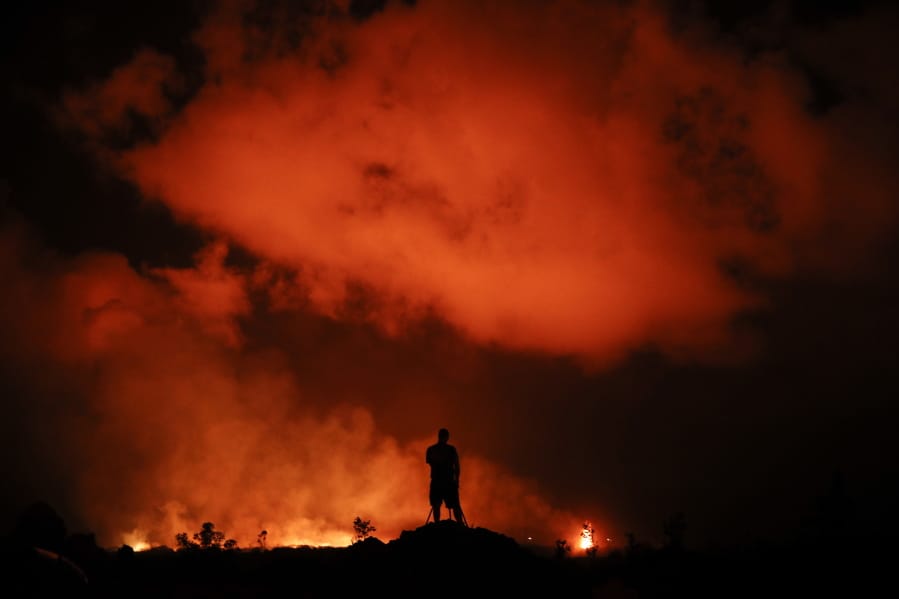PAHOA, Hawaii — A year after a volcano on Hawaii’s Big Island rained lava and gases in one of its largest and most destructive eruptions in recorded history, people who lost their homes and farms in the disaster are still struggling to return to their cherished island lifestyle.
More than 700 homes were destroyed in the historic eruption, and most people will never move back to their land.
Over four months, Kilauea spewed enough lava to fill 320,000 Olympic-sized swimming pools, burying an area more than half the size of Manhattan in up to 80 feet of now-hardened lava. The molten rock reduced landmarks, streets and neighborhoods to a vast field of blackened boulders and volcanic shard.
But the disaster, which county officials estimate will cost about $800 million to recover from, affected more than just the people and places in the lava’s path.
Dozens of nearby homes that were spared still sit empty, either cut off by surrounding flows, damaged by airborne debris or downwind of cracks that continue to spew toxic gases.
Big Island Mayor Harry Kim lost a home in the eruption and says people are just beginning to come to terms with the devastation.
“We as human beings wish for normal to come back,” Kim said. “In a volcanic eruption, everything you know is no longer there.”
The longtime mayor says many outsiders question why anyone would live on the side of an active volcano.
“This is and was a very beautiful place to live. It was special,” Kim said. “It’s not just a home, it’s a lifestyle here.”
A father’s final wish
Among those whose lives were forever changed are Tisha Montoya and her family, who lived off the grid on several acres downslope from where the eruption began.
They had a large house and several cabins, along with greenhouses, pavilions and animal pastures. Montoya harvested different types of exotic fruit and had a pineapple garden, sheep, chickens, ducks, rabbits and Guinea pigs.
On May 4, the day after the eruption started, she evacuated when a 6.9-magnitude earthquake violently jolted the family’s purple octagonal home. Lava was pouring from new cracks in the nearby Leilani Estates neighborhood, and toxic gases filled the air.
Her father, Edwin Montoya, stayed behind to care for the animals. He hoped the entire family would soon be able to return.
Edwin’s children begged him to leave as the lava crept toward their property over the coming weeks. But he was committed to saving the animals, and he was prepared to die doing it.
“If it blows its top and I’m there at the time, I’m 76 years old, I’ve lived a good life, and if I have to go, I want to go,” Edwin Montoya told The Associated Press in May 2018. “I love Hawaii, and this is where I want to stay for the rest of my days.”
As the lava neared, Edwin’s focus turned from taking care of the animals to evacuating them. He left the day before a river of lava arrived and cut the farm in half. The molten rock eventually took nearly all the structures, including the home and all but one small chicken coop that Edwin built.
Lava stopped flowing the first week of September. Edwin died less than a week later.
“It was very stressful to evacuate 100 animals out of here,” Tisha told the AP of her father’s death.
He woke her up one night because he was having trouble breathing. “We didn’t make it to the hospital,” she said. “He passed and then they said later it was a heart attack.”
All roads to the family’s farm are now cut off, leaving it accessible only by a two-hour hike through thick jungle.
Tisha returned there last week.
“This was the most special spot on the whole land,” she said as she paused to pray near the miles-long wall of lava covering her home. “So we buried him here as he wanted us to. His ashes, anyway, are sprinkled right over there on the edge, where the lava meets the green.”



